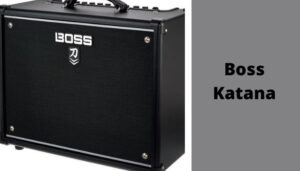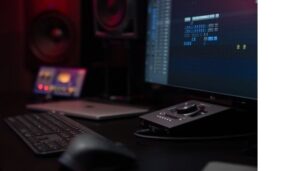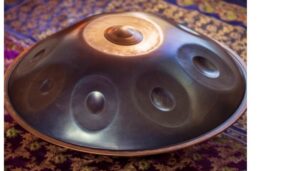Epiphone Sg Guitar
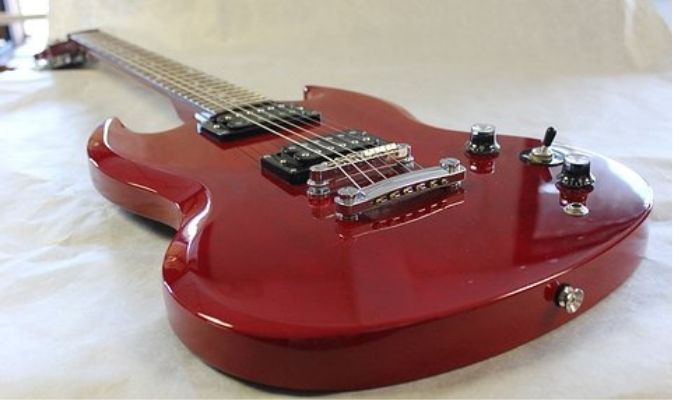
Whenever you see certain guitars, you can tell that they have significance visually. They are either associated with a certain era or with a particular kind of music. Furthermore, several guitars crossed the boundaries between styles and genres while being played in a variety of settings.
The SG series, on the other hand, is a different story.
It has always meant and will continue to signify one thing. Rock, and I mean loud rock.
We can’t recall who was the first to make use of it. Tony Iommi from Black Sabbath might have been in attendance, but he was accompanied by some fantastic company.
Angus Young of ACDC, of course, as well as Frank Zappa, Robbie Krieger of The Doors, the Allman Brothers, and Glenn Tipton of Judas Priest, are all on the list. And we do not doubt that Terry Kath of Chicago used one on the Isle of Wight in 1969.
During the recording of the Who’s Live at Leeds album, Pete Townshend had a guitar, but he threw it away since he couldn’t crush it up easily with his hands.
Its shape and design, on the other hand, were distinctive, floating somewhere between aggressive and downright unpleasant. Very rock ‘n’ roll in style. It was significantly lighter than its stablemate, the Les Paul, and had a substantially smaller body size, making it much easier to handle.
The tone of the SG is a touch brighter, but there isn’t a significant difference unless the SG is equipped with P90s or similar pickups.
The Epiphone SG Special is a special edition of the SG. VE Epiphone manufactures this guitar in a few different colors, arguably the most well-known of which is the classic cherry red, but we will be looking at the ebony version.
It has the right shape, the right style, and the right feel, and the dark hue only adds to the mystique of the piece. It appeals to us.
From the beginning, Epiphone has been a fascinating opponent for Gibson in the guitar manufacturing industry.
Their offices, sales teams, and production lines were all located in the same building in the 1960s but they were owned by different persons. The products were strikingly identical to one another, and in some instances, they were nearly clones of one another.
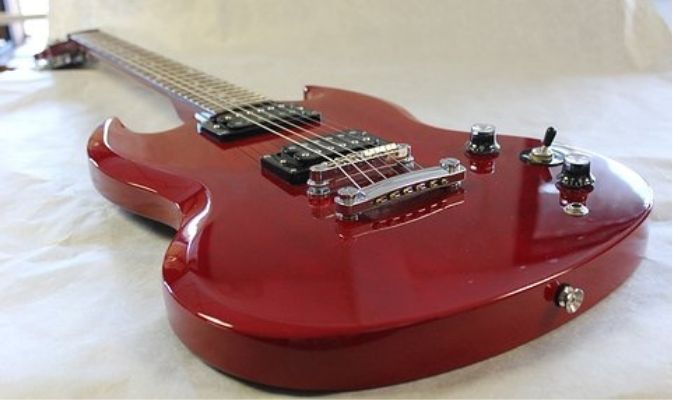
Epiphone-SG-Special-VE
Gibson aficionados will argue that their brand was always superior, but the truth is that they weren’t.
As the 1960s battle between the Epiphone Casino and the Gibson 330 revealed, Epiphone was at least one time the superior instrument, if not the superior instrument. The Casino, on the other hand, is significantly superior.
Today, however, Epiphone is regarded as the premium line of Gibson guitars, in the same way, that Squier is regarded as the premium range of Fender guitars. Epiphone, like Squier, can make guitars that are on par with or better than the quality of their more venerable competitor.
Poplar is used to constructing the body of the Epiphone SG Special VE. It is built to the original specifications and includes, of course, the renowned double cutaway that serves as the guitar’s primary aesthetic characteristic.
Because of its exceptional tonal qualities and richness of sound, this wood is widely used in musical instrument construction. It is finished with a veneer of mahogany to complete the look.
An ‘aged finish is applied, which means it is neither shiny nor glossy, but rather has the appearance of a guitar that has been played. That is not to argue that it is uninteresting in terms of appearance. Rather than having a glossy finish, a ‘matt’ finish is perhaps the most accurate way to characterize this material’s appearance.
It has the appearance of a guitar that has seen a lot of use, but it is free of the chips and scrapes that would normally accompany that.
It’s shaped and beveled for comfort and ease of play, and it looks the part, as it always has, but that’s not surprising.
The aesthetic is completed by the black pickguard of the guitar.
The Neck On the SG Special VE, Epiphone has chosen an Okoume wood neck as opposed to a maple neck. It has a ‘D’ shape profile, but because of its sleek 60s taper, it feels well and plays quickly. A single truss rod is used to support the neck, which is bolted on and measures 24.75 inches long.
Hardware
Both the machine heads and the bridge are LockTone Tune-o-Matic, and the machine heads are chrome die-cast. A stop bar tailpiece is used to finish off the tail end of the piece.
The Commands and Controls
- The two control knobs are typical speed knobs, as is the rest of the device.
- The Pickups have arrived.
- As you might assume, the bridge and neck positions are occupied by Humbuckers.
Ceramic magnets have a high output and are quite brilliant, however they cause the pickup to be a little one-dimensional. This is excellent in the arena of heavy rock and even metal, but it is less effective if you are looking for a little finesse.
It’s not going to be subtle, but then again, I don’t believe the SG was developed with that in mind. The 650R pickup has a bit less tonal character in that you can handle the bottom end reasonably well, but we would not say anything more than that about its tone. It is the ‘killer’ humbucker that will cause your neighbors to put up For Sale signs if you play it too hard. They are quite effective when used together and will provide you with what you desire if what you desire is traditional SG power.
Read More: 15 OUD INSTRUMENT IDEAS

